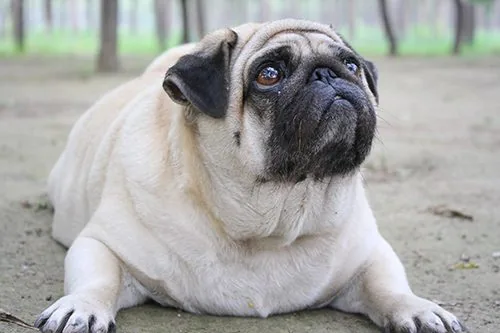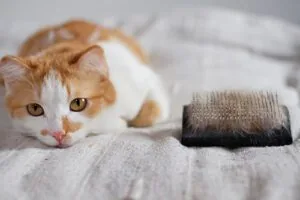Pet Obesity

Weight loss can be challenging for anyone, human or pet. Just like in humans, excess weight in pets can reduce longevity and lead to serious medical conditions. However, maintaining a healthy weight for your pet is achievable with a dedicated commitment to a weight loss program.
Consult Your Veterinarian
Before starting any weight loss program, it’s crucial to consult your veterinarian. Various factors can contribute to weight gain, and it’s essential to rule out any underlying medical conditions. Many pets fail to lose weight because their weight gain was not diet-related. Your vet will conduct diagnostics to identify potential medical issues that could be hindering weight loss.
Some common disorders associated with excess weight include:
- Heart Disease
- Osteoarthritis/Degenerative Joint Disease
- Hypertension
- Hypothyroidism
- Hyperadrenocorticism (Cushing’s Disease)
- Kidney Disease
- Breathing Problems
- Certain Cancers
- Skin Conditions
Determine the Ideal Weight
Your veterinarian will help you identify your pet’s ideal weight based on breed, age, and size. A safe weight loss rate is around 3-5% of body weight per month. Veterinarians have access to prescription diets specializing in weight management. Always gradually transition to a new diet to prevent digestive issues.
Feeding Schedule and Control
A strict feeding schedule is vital. Use measuring cups rather than a food scoop to ensure accurate portions. Split the daily amount into smaller, frequent meals. If multiple people feed your pet, maintain clear communication and have a schedule to prevent overfeeding. For households with multiple pets, feed them separately and avoid leaving food out. Treats can add unwanted calories, so choose healthy options like carrots or green peas, and avoid table scraps which can cause digestive issues.
Track Progress
Maintain a log of your pet’s food intake, exercise routine, and weekly weight. Weigh your pet weekly on the same scale at the same time of day. If your pet isn’t losing weight, daily caloric intake may need further restriction. Ensure no one in the household is giving extra food or treats.
Exercise
Exercise plays a critical role in weight loss. Choose activities suitable for your pet and start slowly. Gradually increase activity levels and provide rest periods if you notice signs of fatigue, like heavy panting. Generally, leash walking for 20-60 minutes a day, five days a week is a good starting point. Swimming is an excellent option as it places less stress on joints. Use toys, balls, or laser pointers to encourage movement and mental stimulation. An exercise routine will improve your pet’s metabolism and overall health.
The secret to successful weight loss in pets is a committed family and a supportive veterinary team. Once your pet reaches their ideal weight, consult your vet to adjust the feeding amount to maintain a balanced weight. Remember, exercise should continue even after the weight loss goal is achieved to prevent regain. Enjoy the longer, happier life with your healthier pet!
Share This Post
Recent Posts
About Shallowford Animal Hospital
Shallowford Animal Hospital and The Pet Spa at Shallowford are dedicated to the exceptional, compassionate care your pet deserves. Pets hold a very special place in our families, and we treat yours like our own.



